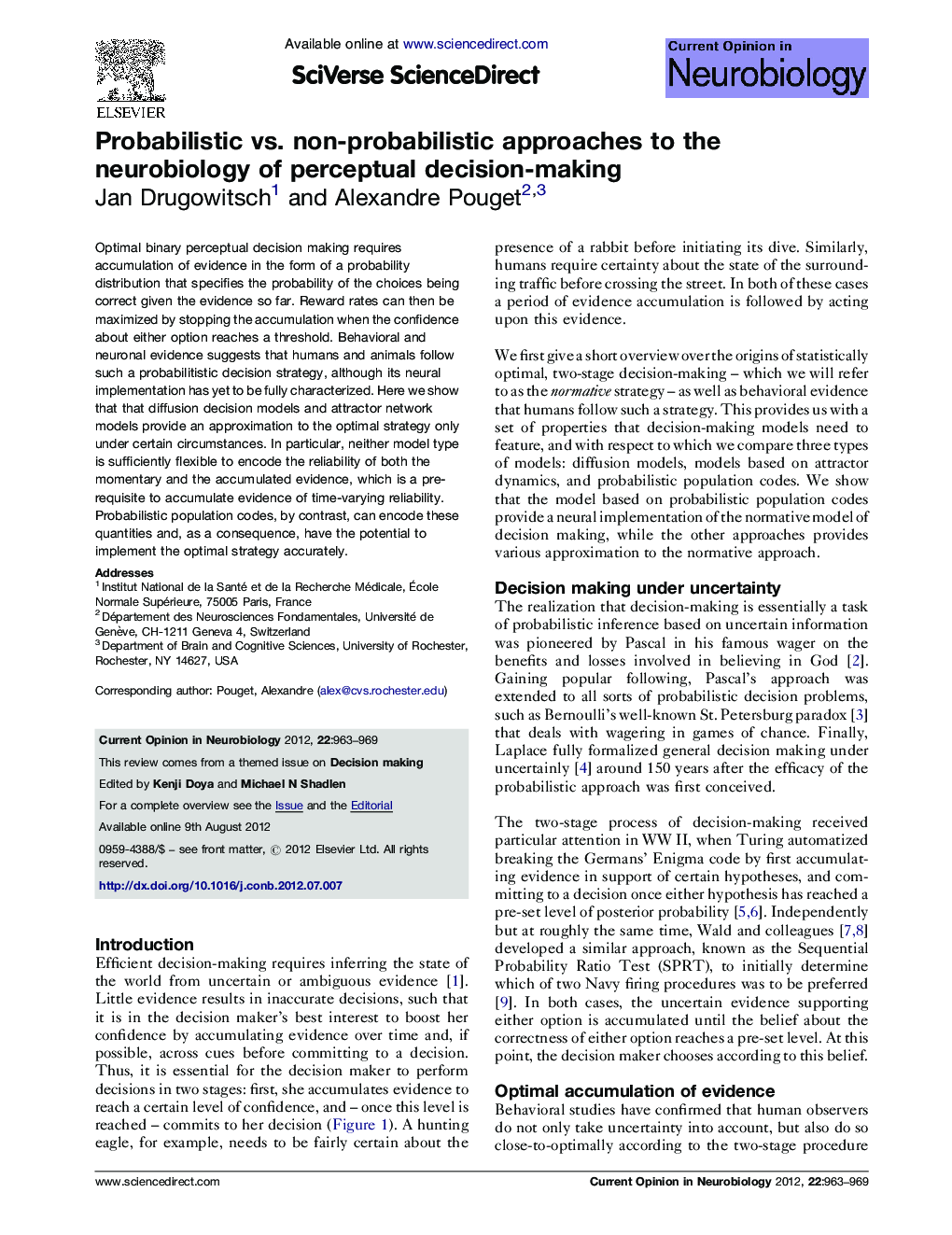| کد مقاله | کد نشریه | سال انتشار | مقاله انگلیسی | نسخه تمام متن |
|---|---|---|---|---|
| 6267256 | 1294933 | 2012 | 7 صفحه PDF | دانلود رایگان |

Optimal binary perceptual decision making requires accumulation of evidence in the form of a probability distribution that specifies the probability of the choices being correct given the evidence so far. Reward rates can then be maximized by stopping the accumulation when the confidence about either option reaches a threshold. Behavioral and neuronal evidence suggests that humans and animals follow such a probabilitistic decision strategy, although its neural implementation has yet to be fully characterized. Here we show that that diffusion decision models and attractor network models provide an approximation to the optimal strategy only under certain circumstances. In particular, neither model type is sufficiently flexible to encode the reliability of both the momentary and the accumulated evidence, which is a pre-requisite to accumulate evidence of time-varying reliability. Probabilistic population codes, by contrast, can encode these quantities and, as a consequence, have the potential to implement the optimal strategy accurately.
⺠Optimal decision making requires accumulation of evidence to bound in confidence. ⺠Behavioral/neuronal evidence suggests humans and animals follow such strategy. ⺠Drift-diffusion and attractor network models approximate this strategy. ⺠Probabilistic population codes have potential to implement strategy precisely.
Journal: Current Opinion in Neurobiology - Volume 22, Issue 6, December 2012, Pages 963-969